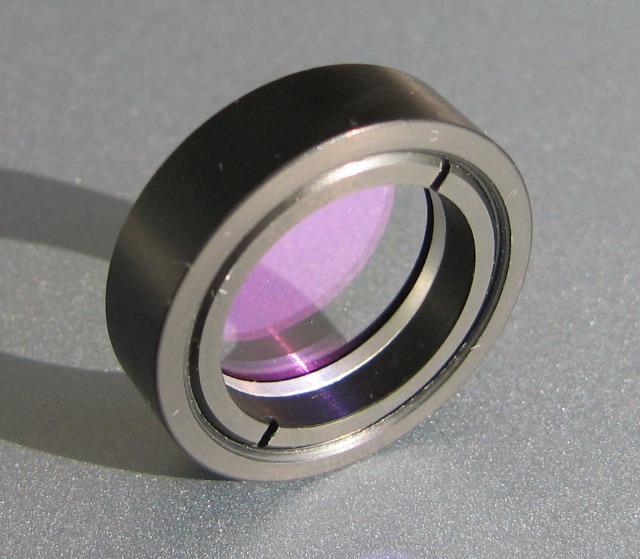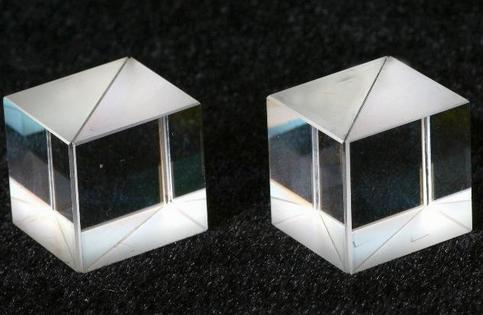In this paper, EDS is used to analyze the different parts of the discolored warm white LED lamp bead . The results show that the silver plating inside the stent has reacted with S element, which indicates the acidity formed by the S element invading from the environment combined with water vapor. The product may be a key factor in exacerbating the silicate phosphors therein.
Keywords: warm white light, white LED, attenuation, color shift
1 Introduction
With the continuous improvement of environmental protection requirements, lighting products have also begun to develop in an energy-saving and efficient manner. Traditional lighting products have low luminous efficiency and short lifespan, which is not conducive to long-term development, which prepares the market for LED lighting. The efficacy of LED lamps can reach 8 to 10 times that of incandescent lamps, 2 times for energy-saving lamps, and the lifetime can reach 5000-100,000 hours, which has great advantages compared with traditional lighting products. With the continuous development of technology and the continuous promotion of products, the price of LED lighting products has been continuously decreasing, and it has begun to enter the general lighting market.
Different spaces require different light colors. Choosing the right light source is also an important part of the lamp selection. The warm white light color temperature is about 3000K, and the light color is yellowish, which can create a warm lighting environment. Therefore, it has been applied more and more in home lighting and some engineering lighting fields.
Warm white LEDs can be achieved by: (1) blue LED + yellow phosphor + nitride red phosphor; (2) blue LED + single YAG orange powder; (3) blue LED + yellow phosphor + silicate orange Phosphor; (4) blue chip + yellow phosphor + red chip. Among them, the first scheme has high color rendering index and high stability, but the overall light efficiency is relatively low and the cost is high; the second scheme has high stability and low cost, but the color rendering index is low. The third scheme has lower cost and high luminous efficiency. It is the most advantageous light effect in all schemes at this stage, but the chemical stability of the silicate phosphor itself is relatively poor, and the color rendering index is low. The fourth scheme has high light efficiency and high color rendering index, but the cost is high, and it is difficult to control the color stability. Combining the advantages and disadvantages of various technical solutions, currently, Scheme 1 and Scheme 3 have gradually become mainstream. The former is mainly used in the indoor main lighting field because of its comprehensive advantages in light efficiency and color rendering index, while the latter is in terms of light efficiency. Significant advantages, currently used in indoor auxiliary lighting or outdoor lighting.
As a mainstream application solution for warm white LEDs, there are still many problems in the application that need to be continuously improved. One of the most common problems is that in the long-term work of the light source, the light color gradually drifts, and the color temperature gradually changes from warm white to positive white. This paper analyzes the system of color-changing lamp beads in order to discover the internal mechanism of color drift and provide a reference for proposing solutions.
2. Experimental methods
In this study, a number of 5050 lamp beads with discoloration were randomly selected from a group of soft-changing flexible strips. As shown in Figure 1, the lower row of color-changing lamp beads has been compared with the above-mentioned row of undiscolored lamp beads. Significant changes have occurred, from the original orange to yellow-green.

Figure 1 The color changing lamp beads are compared with the color changing lamp beads.
Four light sources were randomly taken from the colorless and discolored light source for data testing. The test data is shown in Table 1. Comparing the two sets of data, it can be seen that the x,y value of the color of the lamp after the discoloration changes significantly, the value of x becomes smaller, and the value of y increases, the color temperature also rises from 2940K to 4300K, and the improvement of light efficiency is It is caused by an increase in color temperature.
In order to further analyze the internal mechanism of the discoloration of the lamp bead, this paper uses the energy spectrum (EDS, model _______) for the colloid of the color changing lamp bead, the silver plating in the cup, the bracket soldering foot and other parts for elemental analysis, through these parts The analysis of the elemental changes explores the mechanism of discoloration of the lamp beads.
3. Results and discussion
3.1 Colloidal parts
It can be seen from Fig. 2a-b that the colloid mainly includes elements such as Si, Y, Al, O, etc. Due to the inhibition of X-ray by the silica gel, these elements should correspond to the YAG powder and silicate contained in the colloid. The constituent elements of the powder.

Figure 2 (a) SEM photo of the colloid

Figure 2(b) EDS analysis map of colloid
3.2 Silver plating inside the bracket
The map of Fig. 3b shows that the bottom of the scaffold contains Y, Al, Ga, Si, Sr, Ba, Cl, S, etc., wherein Y, Al, Ga, Si, Sr, Ba are the constituent elements of the corresponding phosphor, and Cl and S The appearance may be that the S and Cl elements in the external environment penetrate through the silica gel and deposit on the surface of the stent.

Figure 3 (a) SEM photo of the inner silver plating layer

Figure 3(b) EDS analysis of the silver plated layer
3.3 pin
Figures 4a-b show the SEM and EDS spectra of the external leads of the bracket. From the map, it can be found that the analysis at the pins contains elements such as S, V, Pb, and Sn, which are inferred to be the constituent elements of the solder paste.

Figure 4 (a) pin SEM photo

Figure 4(b) EDS analysis of the pin location
The author believes that the discoloration of the lamp bead may be due to the attenuation of the silicate orange powder, resulting in a significant decrease in the proportion of orange red light, which in turn manifests itself from warm white light to positive white light. For the color change mechanism, by synthesizing the above analysis data, the author believes that the cause of the color shift may have the following aspects:
(1) Due to the certain water permeability of the silicone material, in the process of use, under the action of high temperature, the water penetrates into the silica gel in the state of water vapor, and the silicate orange powder is hydrolyzed.
(2) The solder paste used for soldering contains a large amount of S element. During the production process, the S element invades the colloid and meets the water vapor. At high temperature, the reaction occurs. The reaction formula is: S(2-) + H2O → HS ( -) +OH(-)[Note: "-" in OH(-) brackets represents a negative valence], and if HS(-) is formed, it will significantly aggravate the effect on silicate phosphors;
(3) During use, the ambient atmosphere contains Cl(-) ions. Once invaded, HCl is formed, which also plays a similar role to HS, which is to aggravate the corrosion phosphor.
4. Preventive measures
It can be seen from the above analysis that silica gel is used as a coating carrier for the phosphor, which plays a crucial role in the stability of the LED lamp bead. In this paper, combined with the world application, the preventive measures are proposed from the following aspects.
First of all, it is required to form a good bond between the colloid and the teaching, so as to prevent the intrusion of water vapor and external pollutants from the interface. At the same time, the colloid itself is required to have good isolation. At present, there are two major types of silicone materials on the market, such as silicone resin and silica gel. The silicone resin has a high degree of cross-linking due to its long-chain macromolecules. It is superior to silica gel and has good isolation effect on water vapor intrusion. If you can control the intrusion of water vapor, you can avoid the hydrolysis reaction with the phosphor powder, thus significantly reducing the probability of discoloration of the lamp bead.
In the second aspect, low-S solder paste or solder should be used as much as possible. At the same time, in the production process, the airflow of the production environment should be as smooth as possible to avoid the enrichment of S element in the local space. In addition, the casing material without S element is also effective protection. One of the measures;
In the third aspect, heat is a catalyst that causes the phosphor to undergo metamorphism. It is optimized from the aspects of lamp structure and heat dissipating material to improve heat dissipation and lower the working temperature. It is also an important improvement measure to alleviate discoloration.
In the fourth aspect, a phosphor having a water-repellent coating treatment may be selected. The silicate orange powder developed by Borui Optoelectronics (model BO591 series) is a unique patented coating technology that forms a hydrophobic layer on the surface of the powder to prevent water molecules from adsorbing on the surface of the phosphor particles, and is also beneficial for promoting fluorescence. The dispersion of powder in colloids enhances the consistency of light and color, and has been widely used in many packaging enterprises.
5 Conclusion
In this paper, EDS is used to analyze the different parts of the discolored warm white LED lamp bead. The results show that the silver plating inside the stent has reacted with S element, which indicates the acidity formed by the S element invading from the environment combined with water vapor. The product may be a key factor in exacerbating the silicate phosphors therein.
By selecting a silicone material with excellent water repellency and a phosphor, the problem of discoloration of the lamp bead can be greatly alleviated. Of course, if we can develop phosphors with excellent chemical stability from the source, we can accept this problem at all. This is the research direction that our phosphor materials suppliers need to pay attention to for a long time.
Coupletech Co., Ltd. is professional manufacturer of Polarization Optics: PBS, NPBS and all kinds of polarizer and waveplate. Our Polarizing Optic products consist of Beam-splitting cuble, Polarizing Beam Splitter Cubes ( PBS ), Non-Polarizing Beamsplitter Cube ( NPBS ), Low order waveplate, Zero order waveplate, Dual wavelength waveplate, achromatic waveplate, Rochon Polarizer, Wollaston Polarizer, Glan Thompson Polarizer, Glan Laser Polarizer, Glan Taylor Polarizer, depolarizer, Brewster window, quartz, Polarization Rotator, optical isolator, and so on. Besides, we also supply optical coating, e.g. AR coating, HR coating, coating and wide range coating.
Coupletech is a long-term partner you can count on, especially polarizing optic. We focus on high quality, quick response, improving Ceaselessly, customer satisfying.


Polarizing Optic
Polarizing Optic,Polarization Rotator,Polarizing Filter,Circular Polarizer Filter
Coupletech Co., Ltd. , https://www.coupletech.com
